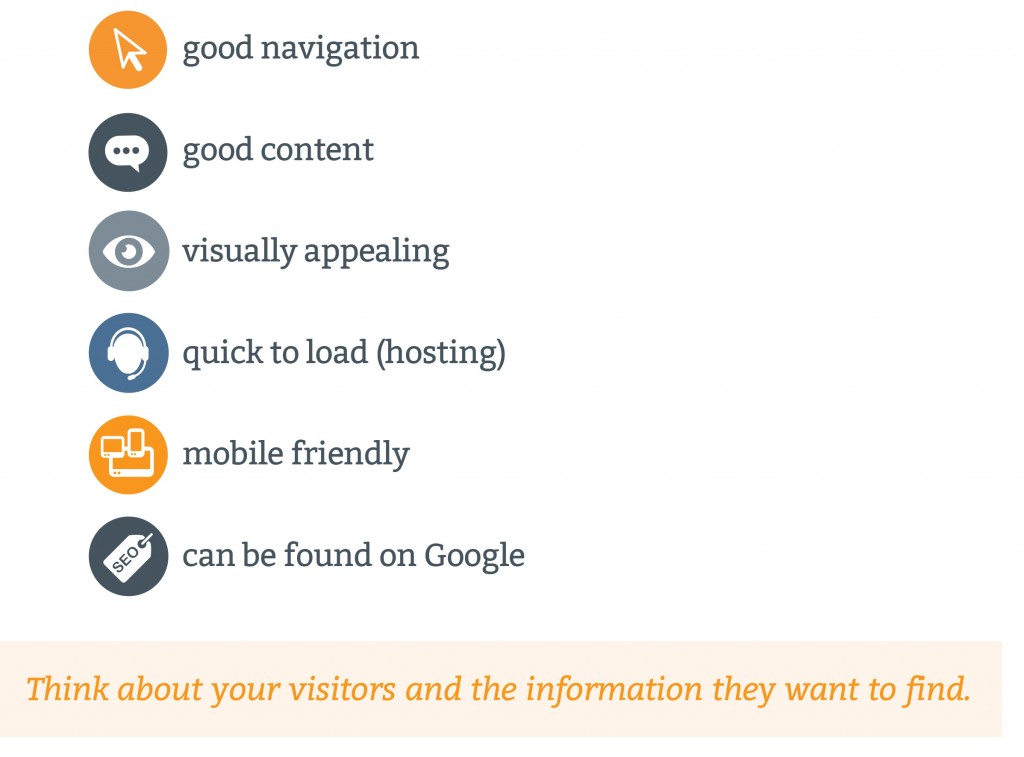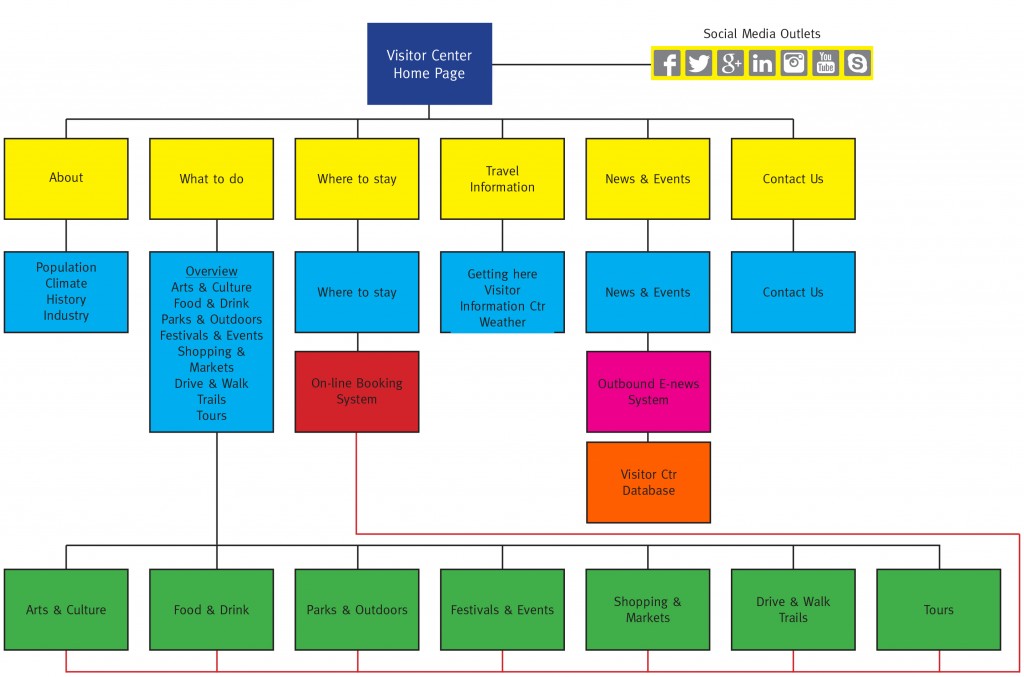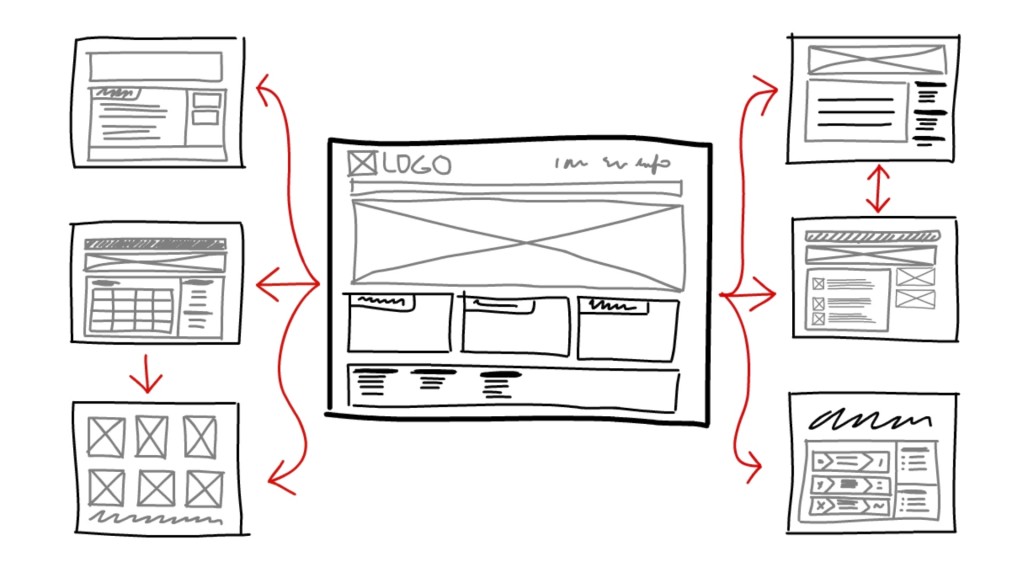You don’t need to be a technical expert to commission new visitor information website project. But, understanding the process and knowing a little about the technical side will help you ask the right questions and get the best outcome.
What makes a good website?
1. All websites need careful planning – at the start!
Building any website, but especially a visitor information website with the features listed in our article – ‘What makes a good visitor information website?’, includes a planning phase early on.
In the planning phase, the features, content, structure, navigation, menus are all nutted-out. This phase should revolve around your objectives for the website, your users and what you want them to do on your site (eg: make a booking, sign-up for your enews, etc).
Creating a good user experience should be paramount at this stage.
The planning phase usually includes creation of a site map and an interactive prototype (wireframe). These are done before the visual design and building while it is still easy and cheap to make changes to menus, navigation and content. Your website builder should work closely with you on these and make sure you understand them.
Example of a sitemap
Example of a wireframe
2. Think about how your website will be found on the web early
The planning phase is the time to start thinking about making it easy for your website to be found. This is called search engine optimisation (SEO).
Getting a comprehensive Keyword Plan prepared will help you to understand the keywords used by your potential visitors to your area. You can then use these keywords in your content, menu headings and headlines to increase the chances of potential visitors finding your site. Once your website is up and running, you may want to use SEO services or online advertising (Google Adwords) to help you rank in Google’s search engine results for the relevant keywords.
Spending time to develop a content marketing strategy at this stage will provide clarity and direction for your ongoing online efforts. You want to think about how you will use social media to generate interest from visitors/potential visitors and get them to share information.
Your social media pages should be easily accessible from your website and vice versa so that people searching can easily find information. You may also want to use QR codes, hashtags, social media links in your advertising and marketing material to drive people to your website for more information.
3. Think about your content early
The planning phase is also the time to start thinking about the content you will need and how it will be created.
- Do you need photos, graphics or other images? Do these need to be commissioned or sourced?
- What text do you need? Does this need to written? Can you do this or will you use a copy writer?
- How (in what format?) and when does your website developer need the content?
4. A visually appealing site is critical
Once the planning for your website is complete, the visual design can start. This is when your destination’s brand is brought to life. Graphics, images, type and colour will be used to create the look and feel you want. Be sure to show examples of websites you like, even if they’re not in the same field as you.
Some visitor information websites are built on template designs. This will generally keep the design and build cost down but its’ unlikely you’ll end up with a unique looking website. A bespoke site may be more costly.
For maximum visual appeal –
- use images instead of text
- use good photos of your destination to really show visitors the experience they can have
- use a clean, uncluttered style
- reflect your destination brand well – the style, look & feel should match any printed material
- make sure your content is well-organised and easy to read and easy to find
5. Make sure the website platform is right for you needs and you understand the costs
Do your homework here. What is the right system for your website to be built on? What will give you the functionality you need at the lowest price?
Some websites are built on proprietary software platforms. Ensure you know what platform the developer is using and why he/she is recommending it for your site. What are the licensing fees? Are there ongoing subscription fees you need to be aware of? Do the costs fit your budget and needs?
There are website platforms (e.g.: WordPress), which do not require any licensing fees. They can have features added (eg: e-commerce capability) at minimal cost.
Aside from licensing costs, it’s important to know how easy the website will be to update and add new information. A visitor information website will generally need to be updated frequently with new content, photos, specials and news. We recommend your website has a content management system (CMS) so you can do the updates in-house to keep costs down. Your website developer should provide training and a training manual so you know how to use the CMS.
If you require more significant changes to your website – for example, a new feature or new page – you may not be able to do this through the CMS. So, you need to know how these kinds of changes can get done and by whom? Are you locked in with your website developer? Or can another developer make the changes? How much will this cost?
6. Integration of booking systems
Many visitor information websites include booking systems. Your existing system can be integrated into a bespoke site that is designed for your area’s unique needs and brand. You do not have to use an off-the-shelf template to use these systems.
7. Google Analytics should be set-up before launch
Google Analytics will be set-up on your website so you can see how many visitors you get, the keywords they use for searching, which pages they view on the site, how long they stay and which websites they come from (if there’s a link to your site from another site – eg: westernaustralia.com). This data can help you to improve your ongoing marketing efforts.
8. Hosting
Make sure your website is hosted locally so that it is fast-to-load. This contributes to a good visitor experience. Back-ups and security updates should be included.
Maintenance and software updates & fixes for your site will be needed from time to time to keep the website functioning optimally. These may be done automatically by your developer but this is something you should check when you commission the site.
Need more information?
Contact [email protected] or on +61 (8) 9430 4177 to discuss your project.





